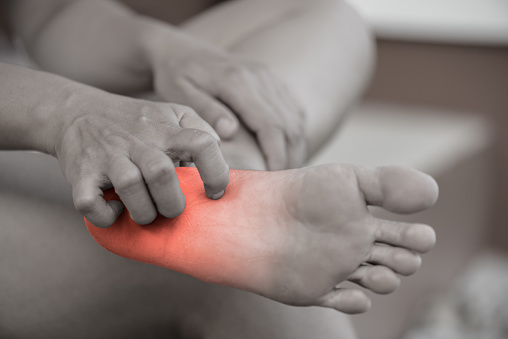Common Foot Problems Treated by Podiatrists and Podiatrists

A Podiatrist can diagnose and treat a number of common foot problems. Symptoms can include heel pain, arch pain, or soreness of the foot and leg. Various treatment methods are available, including a Podiatrist’s advice on footwear and a physical therapy program.
Podiatric treatment for these conditions may involve the use of insoles or orthotics. It may also involve the use of taping and strapping to reduce the strain on the plantar fascia. In more severe cases, stretching exercises may also be recommended. A Podiatrist can also prescribe medication to help relieve symptoms and prevent further damage to the foot.
Another type of foot problem that a Ocean Grove podiatrists can treat is bunions, which occur when the joint at the base of the big toe becomes larger than the rest of the foot. This condition can be painful and may require surgery. A podiatrist can diagnose the condition and recommend a treatment plan based on its severity.
Armstrong Creek podiatrists can treat problems that cause inflammation of the joints and ankles. They can also prescribe drugs, inserts, or special shoes to help alleviate the pain. Sometimes, however, a Podiatrist may also recommend surgical procedures or physical therapy.
Seeing a Podiatrist is also important if you suffer from diabetes. Diabetics are at a higher risk of developing serious foot problems. Getting an exam once a year from a Podiatrist can help prevent complications from occurring. An ingrown toenail can be removed by a podiatrist. The doctor may prescribe medication to treat infection and can even numb the area during the removal.
Treatments may include the use of orthotics to correct abnormal foot alignment. Orthotics are shoe inserts that redistribute pressure away from the ball of the foot. A Podiatrist may also recommend appropriate shoes and a stretching exercise program. If conservative treatments do not work, surgery may be necessary. The procedure is usually performed in an outpatient facility or in an office setting.
A Podiatrist can treat a variety of conditions, including neuromas, which are benign growths of nerves located in the toes. These conditions often develop as a result of improper footwear, overpronation, or repetitive movements of the feet. Treatment for these conditions can include orthotics and cortisone injections. In severe cases, surgical removal may be necessary.
Heel spurs are painful and can occur in any part of the body. Heel spurs can be caused by arthritis, excess weight, or worn-out shoes. A Podiatrist can treat them conservatively, using padding to relieve pain or through surgical intervention. Surgical treatments may include cortisone injections and surgery.
Flat feet, also known as collapsed arches, affect 20-30% of the general population. The causes of flat feet range from poor foot biomechanics to arthritis and diabetes. Common symptoms include tired feet, pain in the leg and back, and restricted foot flexion.




